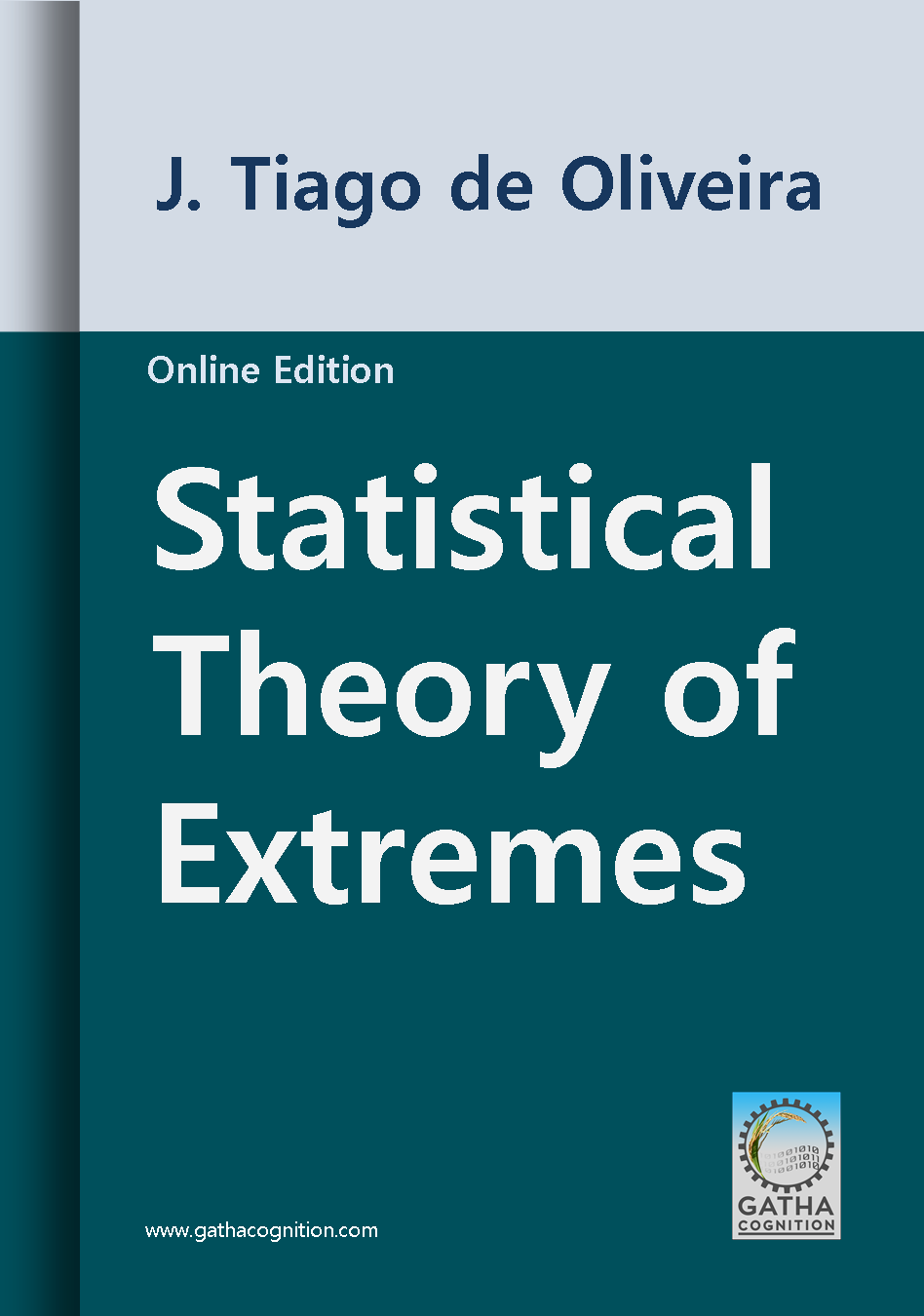1 . Introduction
As this theorem has been referred to and will be important to the proof of asymptotic univariate results — and to subsequent generalizations — we will give a proof of it. Let \(\mathrm{ \{ Vk \left( x \right) \} }\) be any sequence of distribution functions and suppose that for two sets \(\mathrm{ \{ ( \lambda _{k}, \delta _{k}) , \delta _{k}>0 \} }\) and \(\mathrm{ \{ \left( \lambda _{k}^{*}, \delta _{k}^{*} \right) , \delta _{k}^{*}>0 \} }\)we have \(\mathrm{ V_{k} \left( \lambda _{k}+ \delta _{k}x \right) {\mathrm{\ }\stackrel{\mathrm{w}}{\rightarrow}}~L \left( x \right) }\) and \(\mathrm{ V_{k} ( \lambda _{k}^{*}+ \delta _{k}^{*}~x ){\mathrm{\ }\stackrel{\mathrm{w}}{\rightarrow}}\,L^{*} \left( x \right) }\). Then: \(L^{*} \left( x \right) =L \left( A+B~x \right) \) with \(\left( \lambda _{k}^{*}- \lambda _{k} \right) / \delta _{k} \rightarrow A,~ \delta _{k}^{*}/ \delta _{k} \rightarrow B \left( - \infty<A<+ \infty,0<B<+ \infty \right) \)and conversely.
Essentially the theorem says that no sequence of distribution functions is attracted or converges after convenient positive linear transformations to distribution functions not belonging to the same type, if the limits are proper and non-degenerate.
We will closely follow Feller (1966) for the proof. Assume that \(\mathrm{ \left( \lambda _{k}^{*}- \lambda _{k} \right) / \delta _{k} \rightarrow A,~ \delta _{k}^{*}/ \delta _{k} \rightarrow B }\)and we will show that \(\mathrm{ L^{*} \left( x \right) =L \left( A+B~x \right) }\). In fact, given \(\mathrm{ ~ \varepsilon >0 }\) , for \(\mathrm{ k }\) sufficiently large, we have
\(\mathrm{ V_{k} \left( \lambda _{k}+ \delta _{k} \left( A+B~x- \varepsilon \right) \right) \leq V_{k} \left( \lambda _{k}^{*}+ \delta _{k}^{*}~x \right) \leq V_{k} \left( \lambda _{k}+ \delta _{k} \left( A+B~x- \varepsilon \right) \right). }\)
Letting \(\mathrm{ k \rightarrow + \infty }\)and at the points \(\mathrm{ x }\)that are continuity points of \(\mathrm{ L^{*} \left( x \right) }\) and \(\mathrm{ A+B~x \,\pm \, \varepsilon }\) that are continuity points of \(\mathrm{ L \left( x \right) }\) — which excludes at most a denumerable set — we get
\(\mathrm{ L \left( A+B~x- \varepsilon \right) \leq L^{*} \left( x \right) \leq L \left( A+B~x+ \varepsilon \right) . }\)
Letting now \(\mathrm{ \varepsilon \rightarrow 0 }\) we get \(\mathrm{ L^{*} \left( x \right) =L \left( A+B~x \right) }\) except possibly at a denumerable set and thus everywhere owing to the right-continuity of distribution functions.
Let us now assume that \(\mathrm{ L^{*} \left( x \right) =L \left( A+B~x \right) }\). As \(\mathrm{ L }\)and \(\mathrm{ L^{*} }\) are proper and non-degenerate, choose two continuity points \(\mathrm{ x’<x" }\) of \(\mathrm{ ~L^{*} \left( x \right) ~ \left( 0<L^{*} \left( x’ \right) <L^{*} \left( x" \right) <1 \right) ) }\); then \(\mathrm{ A+B~x’ }\) and \(\mathrm{ A+B~x’' }\) are continuity points of \(\mathrm{ L \left( x \right) }\). For sufficiently large \(\mathrm{ k }\) we have from \(\mathrm{ V_{k} \left( \lambda _{k}+ \delta _{k}~x \right) \rightarrow L \left( x \right) }\) and \(\mathrm{ V_{k} \left( \lambda _{k}^{*}+ \delta _{k}^{*}~x \right) \rightarrow L^{*} \left( x \right) }\)that there exist also continuity points \(\mathrm{ y’<y" }\) of \(\mathrm{ L \left( x \right) }\) such that
\(\mathrm{ V_{k} \left( \lambda _{k}+ \delta _{k}~y’ \right) <V_{k} \left( \lambda _{k}^{*}+ \delta _{k}^{*}~x’ \right) \leq V_{k} \left( \lambda _{k}^{*}+ \delta _{k}^{*}~x" \right) <V_{k} \left( \lambda _{k}+ \delta _{k}~y" \right) }\)
and so \(\mathrm{ \lambda _{k}+ \delta _{k}~y’< \lambda _{k}^{*}+ \delta _{k}^{*}~x’< \lambda _{k}^{*}+ \delta _{k}^{*}~x"< \lambda _{k}+ \delta _{k}~y" }\).
Thus \(\mathrm{ \left( 0< \right) \frac{ \delta _{k}^{*}}{ \delta _{k}}<\frac{y"-y’}{x"-x’} }\) and consequently for some subsequence of \(\mathrm{ k }\) we have \(\mathrm{ \delta _{k}^{*}/ \delta _{k} \rightarrow B’ }\) (\(\mathrm{ >0 }\) because of the non-degeneracy). Also \(\mathrm{ y’- \delta _{k}^{*}~/ \delta _{k}~x’< \left( \lambda ^{*}- \lambda _{k} \right) / \delta _{k}<y"- \delta _{k}^{*}/ \delta _{k}~x" }\)and so, as \(\mathrm{ \left( \lambda _{k}^{*}- \lambda _{k} \right) / \delta _{k} }\) remains bounded and in a subsequence of the previous one, it has a limit \(\mathrm{ A' }\) .
Evidently \(\mathrm{ A' }\) and \(\mathrm{ ~B’ }\) are uniquely determined and we have \(\mathrm{ A’=A~,~B’=B }\) .
For the situation described where \(\mathrm{ L^{*} \left( x \right) =L \left( A+B~x \right) }\)we say that \(\mathrm{ L \left( x \right) }\) and \(\mathrm{ L^{*} \left( x \right) }\) belong to the same type and the coefficients \(\mathrm{ \left( \lambda _{k}, \delta _{k} \right) }\) and \(\mathrm{ \left( \lambda _{k}^{*}, \delta _{k}^{*} \right) }\) are equivalent; if \(\mathrm{ L^{*} \left( x \right) =L \left( x \right) }\) or \(\mathrm{ A=0,~B=1 }\) will say that they are totally equivalent.





